- News
- Reviews
- Bikes
- Accessories
- Accessories - misc
- Computer mounts
- Bags
- Bar ends
- Bike bags & cases
- Bottle cages
- Bottles
- Cameras
- Car racks
- Child seats
- Computers
- Glasses
- GPS units
- Helmets
- Lights - front
- Lights - rear
- Lights - sets
- Locks
- Mirrors
- Mudguards
- Racks
- Pumps & CO2 inflators
- Puncture kits
- Reflectives
- Smart watches
- Stands and racks
- Trailers
- Clothing
- Components
- Bar tape & grips
- Bottom brackets
- Brake & gear cables
- Brake & STI levers
- Brake pads & spares
- Brakes
- Cassettes & freewheels
- Chains
- Chainsets & chainrings
- Derailleurs - front
- Derailleurs - rear
- Forks
- Gear levers & shifters
- Groupsets
- Handlebars & extensions
- Headsets
- Hubs
- Inner tubes
- Pedals
- Quick releases & skewers
- Saddles
- Seatposts
- Stems
- Wheels
- Tyres
- Health, fitness and nutrition
- Tools and workshop
- Miscellaneous
- Tubeless valves
- Buyers Guides
- Features
- Forum
- Recommends
- Podcast
feature
 Bianchia Aria riding -2.jpg
Bianchia Aria riding -2.jpgCycling's top tech trends for 2018 and beyond
[This article was last updated on January 3, 2018]
The 2018 bike and component ranges are in the shops, and in the bike world 2019 is coming up fast, so here’s a look at the tech we can all expect to see over the coming months and years.
Ever more aero road bikes
The trend towards aero-cising everything in the road bike world has been going on for years now and shows no sign of abating.
The UCI’s 6.8kg minimum race bike weight limit means that manufacturers can’t reduce the grams in their quest for increased speed so aerodynamics has gained more prominence, and there’s a growing recognition that reducing drag will usually have a more significant impact than dropping weight anyway. 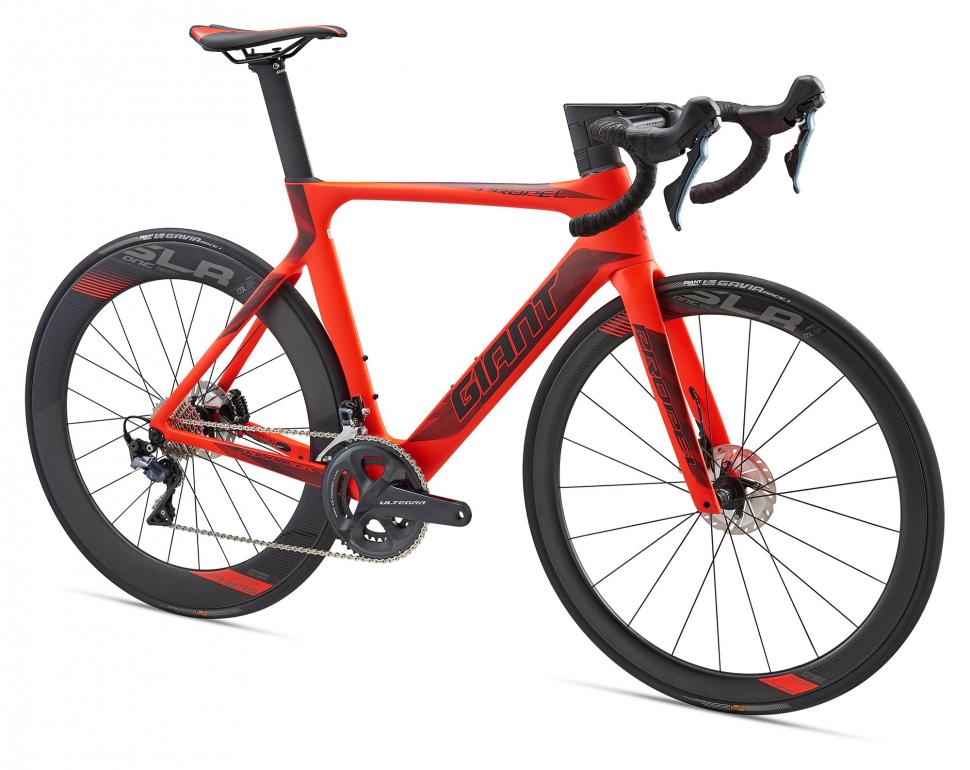
Loads of major brands have revealed new or updated aero road bikes over the past few months which are included for the first time in their 2018 ranges.
Giant, for example, has introduced Propel Disc (above) aero road bikes for 2018, with lower drag than their rim brake predecessors, according to the brand. One of the key features is a new truncated ellipse airfoil shape that is said to lower drag at a wider range of wind angles than traditional teardrop frame tubing.
Read about Giant’s Propel Disc aero road bikes. 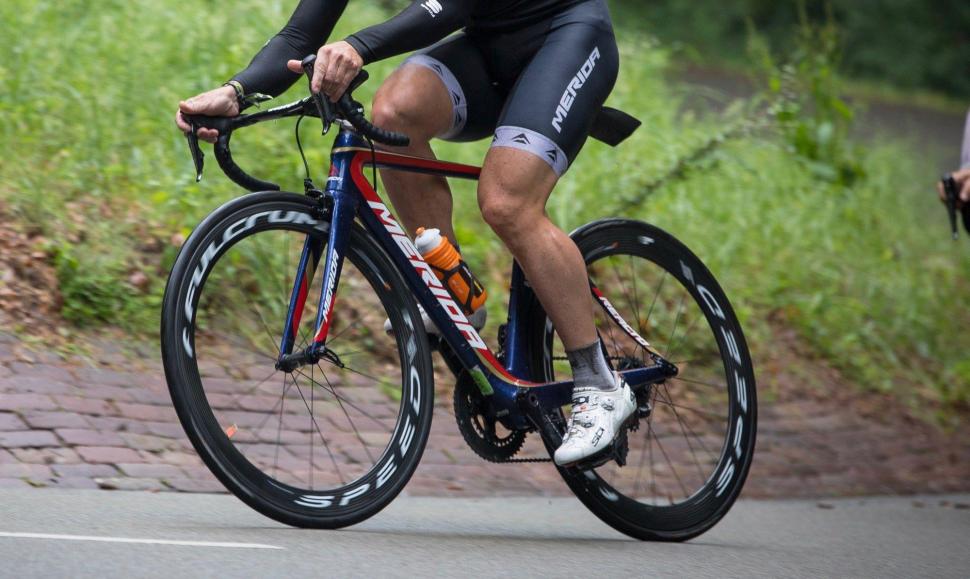
Merida has a new Reacto (above), Lapierre has updated the Aircode, Orbea has introduced an Orca Aero, BH is offering the G7 Pro in 2018, 3T’s new Strada (also see below) has made big news.
Read our complete guide to Merida’s 2018 road bike range. 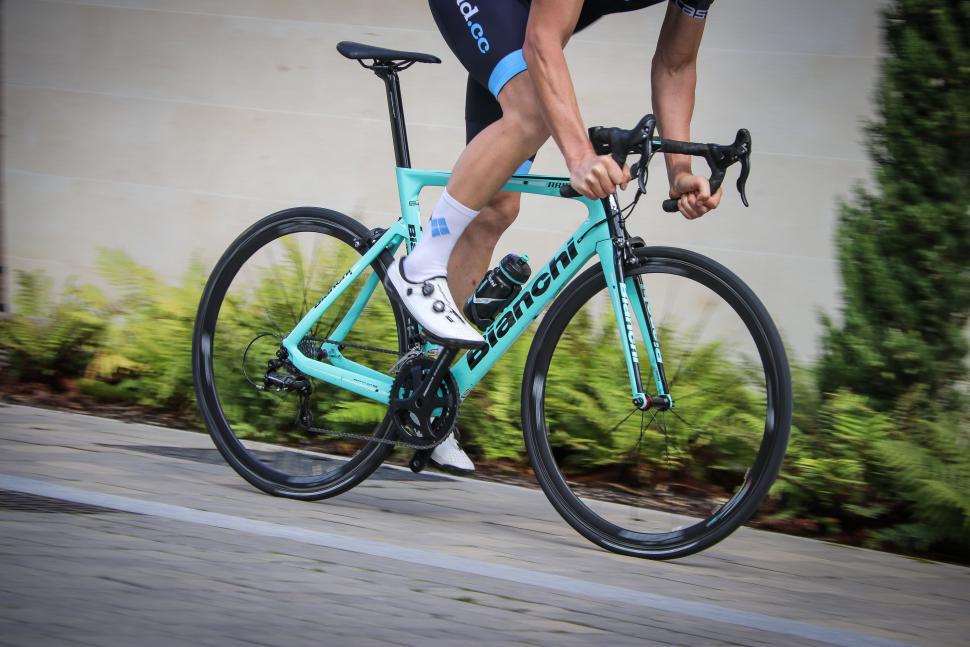
Bianchi’s new Aria aero road bike (above) adds to the existing Oltres in the range, but brings the price down to a more accessible level.
Read our Bianchi Aria review here.
More aero features
Closely related to the above, more non-aero road bikes are getting aero features for 2018.
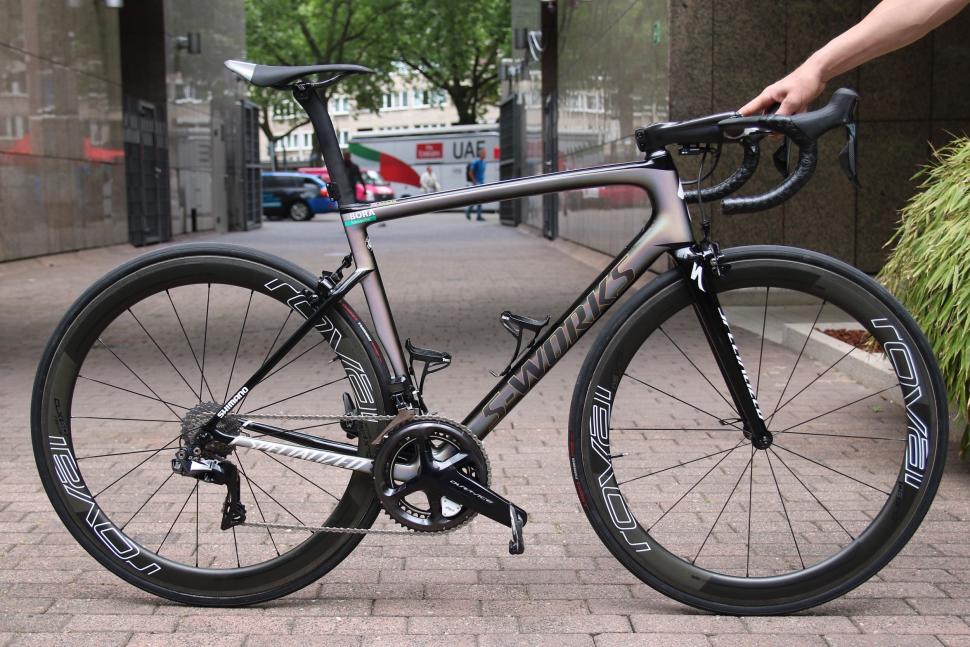
So, for example, you wouldn’t call the Tarmac (above) an aero road bike – that place in the Specialized range is held by the Venge ViAS – but the US brand says it has now taken lessons learned from the Venge and applied them to the Tarmac for the first time.
The goal was to “add aero for free”, according to Specialized, so it has only added aero where it doesn’t increase weight or alter the stiffness. An aero bike like the Venge has tubes designed primarily for aerodynamic efficiency so compromises in weight and stiffness are acceptable, but Specialized has taken the opposite approach with the new Tarmac.
So the 2018 Tarmac has a new fork, dropped seatstays that are reminiscent of those of the Venge and the Shiv time trial bike, and a D-shaped and seat tube and seatpost. Specialized claims the changes see the new Tarmac being “approximately 45 seconds faster over 40 kilometres compared to other lightweight bikes in the same weight category”. Or to put it another way, it's said to be the equivalent to upgrading from traditional box section wheels to 50mm carbon deep section rims.
The new fork has truncated airfoil shaped blades. The crown height has also been lowered to reduce the frontal surface area, a move enabled by the switch to direct mount brakes.
Learn more about the 2018 Specialized Tarmac.
Read our complete guide to Specialized’s 2018 road bike range.
Over at Colnago, the Concept is the full-on aero road bike while the new V2-r (below) is described as being “designed to ensure lightness, rigidity and aerodynamics”. In other words, aerodynamics is definitely in the mix but it’s not the be all and end all. Think of it as a semi-aero bike.
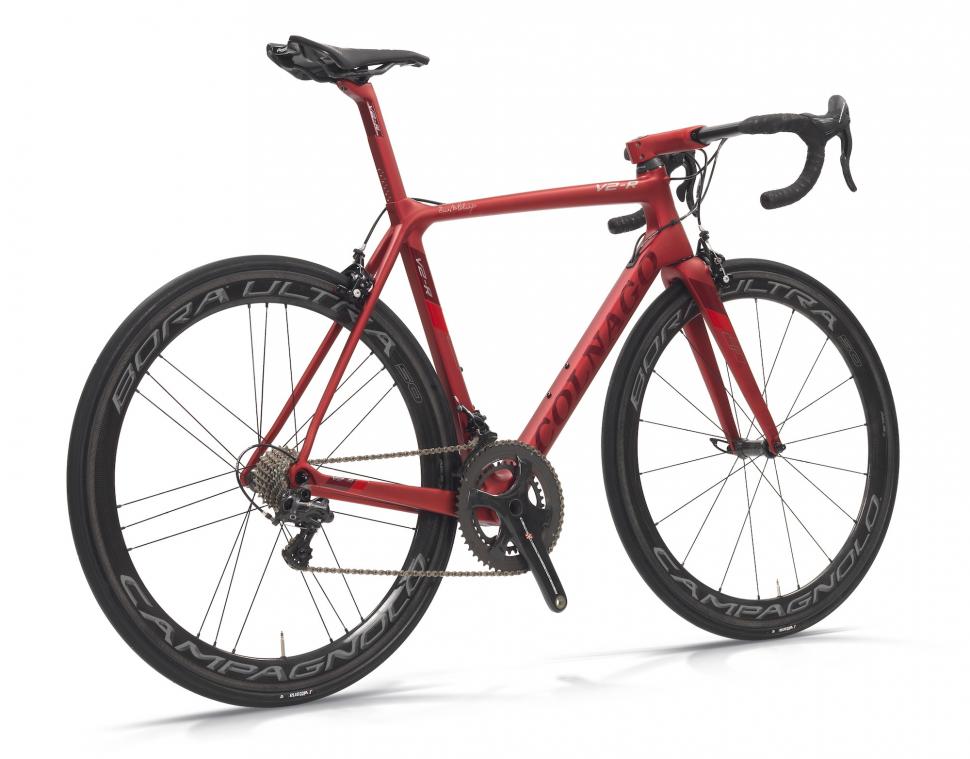
Like the V1-r before it, the V2-r uses NACA airfoils (airfoil shapes for aeroplane wings developed by the National Advisory Committee for Aeronautics) with a truncated shape. Colnago uses this profile of all the main tubes and the fork blades. Rather than using the V1-r’s external seat post clamp, V2-r uses a wedge system with the bolt integrated into the frame.
In other words, there’s a slight blurring of the boundaries between aero road bikes and non-aero road bikes. Of course, there have been lightweight road bikes with aero features for years – Merida’s Scultura has had tube cross sections based on NACA0028 airfoil wing profile with a fastback trailing edge since 2015, for example – but they’re becoming more common now.
Loads of disc brakes
Look, we got a long way into this article before mentioning disc brakes, but they’re unavoidable. Disc brakes are already widespread on the road but they’ll be just about everywhere in 2018.
The use of disc brakes in the professional peloton is still undergoing a trial period but we all know that unless something dramatic happens they’re here to stay and, like it or not, where the pros lead a significant part of the bike buying public follows. High profile wins by riders using disc brake bikes, such as Marcel Kittel on his Specialized Venge ViAS Disc (he won’t be on it in 2018 after switching from Quick-Step Floors to Katusha Alpecin), have done great things for the acceptance of the technology.

Typically, manufacturers are making a disc brake version of existing rim brake bikes. These models will be available with disc brakes for the first time in 2018: Trek Emonda (above), Giant Propel, Merida Reacto, Scott Foil… there are loads more.
Plus, new models like the Bianchi Aria and Colnago V2-r are available in either rim brake or disc brake formats, and a few, like the 3T Strada (above) and the Simplon Pride (below) are disc brake only.
Oh, and then there’s the Wilier Cento10NDR endurance road bike (below) where the same frame and fork will take either disc brakes or rim brakes; you can swap between them, if the mood takes you!
Read all about the Wilier Cento10NDR.
Many of these bikes are aero road bikes. One of the objections people have often put to disc brakes is that they trail rim brakes in terms of aerodynamic efficiency but Merida claims the difference between the two versions of its new Reacto is less than one watt at 45km/h, and Giant says that its new disc brake Propel has a lower drag coefficient at a wider range of yaw angles than its rim brake predecessor.
“Engineers… found that, with proper integration, a disc-brake design can actually improve aero performance compared to rim-brake configurations,” says Giant. “This is because the location of traditional callipers (either in front or behind the fork crown/ legs) creates 'dirty' air.
“Opening up the fork crown area (by placing the disc-brake callipers down at the hub) means that the air hitting the new disc-brake calliper has already been disrupted by the leading edge of the tyre/wheel. This effect is further enhanced by an asymmetric fork that helps smooth out airflow over the calliper.”
The 3T Strada's fork has a super-low crown because there's no need to offer much depth up there on a bike with disc brakes...
...and the brake can be tucked right in behind the fork leg.
You can expect to see ever more disc versions of existing bikes. We'd be massively surprised if Trek didn't launch a disc version of its Madone in 2018, for example, and we reckon a Bianchi Oltre XR4 disc must be in development.
Gravel/adventure sector expands again
Gravel has been The Next Big Thing for as long as we can remember and although we’ll never have a gravel race scene on the scale that they do in the US, this is a sector that’s set to grow further in 2018.
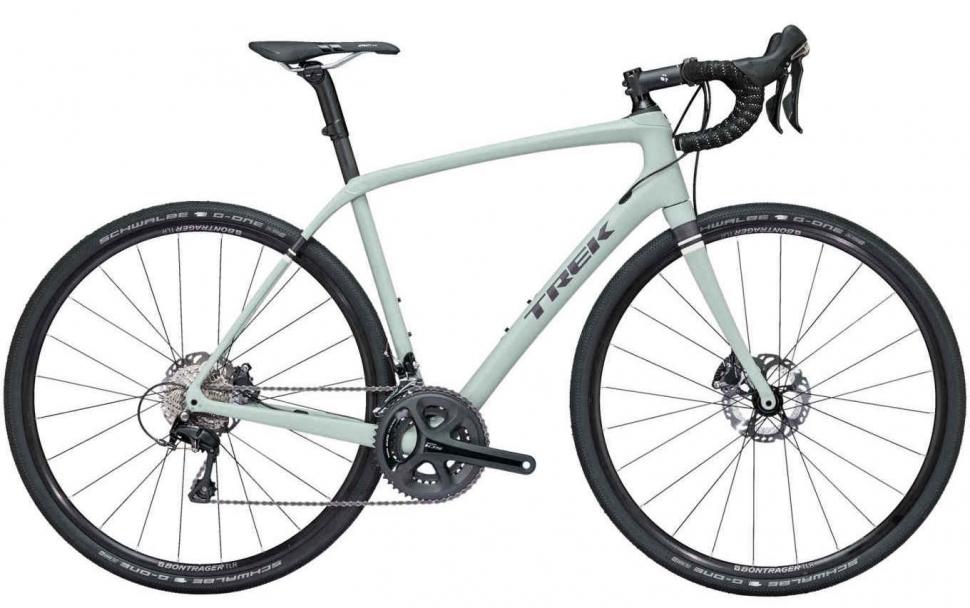
Trek, for example, has added the Domane SL 5 Gravel (above, £2,600) to its range for 2018, along with the Domane ALR 5 Gravel (£1,650). Both of these bikes come with disc brakes and gravel-specific tyres, although they’re built to the same endurance geometry as standard Domanes.
You don’t have to ride gravel bikes on gravel, and you don’t necessarily have to have an adventure on an adventure bike. Part of their appeal is that they’re so versatile.
Go to Merida’s website and you’ll see the new Silex bike (above) listed in the ‘gravel’ section. However, Merida’s International PR Manager Mike Wilkens said, “We are not really pushing this as a gravel bike but more as an all road bike which is at home on roads (in particular rough UK roads), tracks, perhaps gravel and an ideal partner for commuting, bike packing, and so on, and also as a super comfortable and confident inspiring bike for the roadie crowd.”
Find out about Merida's new Silex bikes.
Kona has given its Rove (above) adventure bike a revamp for 2018, and built the top three models around 650b wheels and tyres, with a choice of a Reynolds 853 frame on the range-topping model alongside two more affordable aluminium versions. Meanwhile, lower down the range there are five versions of the Rove rolling on 700c wheels.
Cube is launching an entirely new Nuroad range for 2018 (above) which is designed to bridge the gap between road and cyclocross.
“It's a nimble, adaptable, go-anywhere bike that will take even the roughest of road surfaces in its stride. Tarmac, gravel, mud.... it's all good,” says Cube.
The 6061 T6 aluminium frame is made to a gravel/comfort geometry and, like the alloy steerer/ carbon legged fork, it’s thru axle and will take tyres up to 40mm wide (35-36mm tyres are fitted). Mudguard and rack mounts mean the Nuroads are also adaptable for all weather commuting, for example.
Check out our complete guide to Cube’s 2018 road bike range.
1x strides on
1x (pronounced ‘one by’, a SRAM system with a single chainring and a wide-ranging cassette) isn’t for everyone but it looks set to grow in 2018.
One of the most interesting 1x developments is the introduction of 3T’s new Strada aero road bike (below) which was designed by Gerard Vroomen specifically with a single chainring in mind. This bike will be raced on the road by the Aqua Blue Sport pro team in 2018.
Check out Aqua Blue Sport's 3T Strada.
Road racing on a 1x bike might be a step too far for many people but there are there are, of course, already plenty of cyclocross and gravel bikes using 1x and many new for 2018 models will be available in this configuration.
Most of Merida’s Silex bikes (see above), for instance – the 300 (£1,200), 600 (£1,700), 6000 (£2,250) and 9000 (£3,500) – are 1x equipped.
1x isn’t going to take over any time soon, but it’s certainly here to stay.
The rise of integration
Integration is another trend that’s continuing into 2018 ranges.
Bikes with Shimano Dura-Ace R9150 Di2 groupsets, for example, can be fitted with the Junction A (battery level indicator, charge point and gear index setup switch) that fits into the end of the handlebar or into a specific frame mount rather than hanging underneath the stem. It neatens up the look of the front end a little.
Read our Shimano Dura-Ace R9150 Di2 first ride.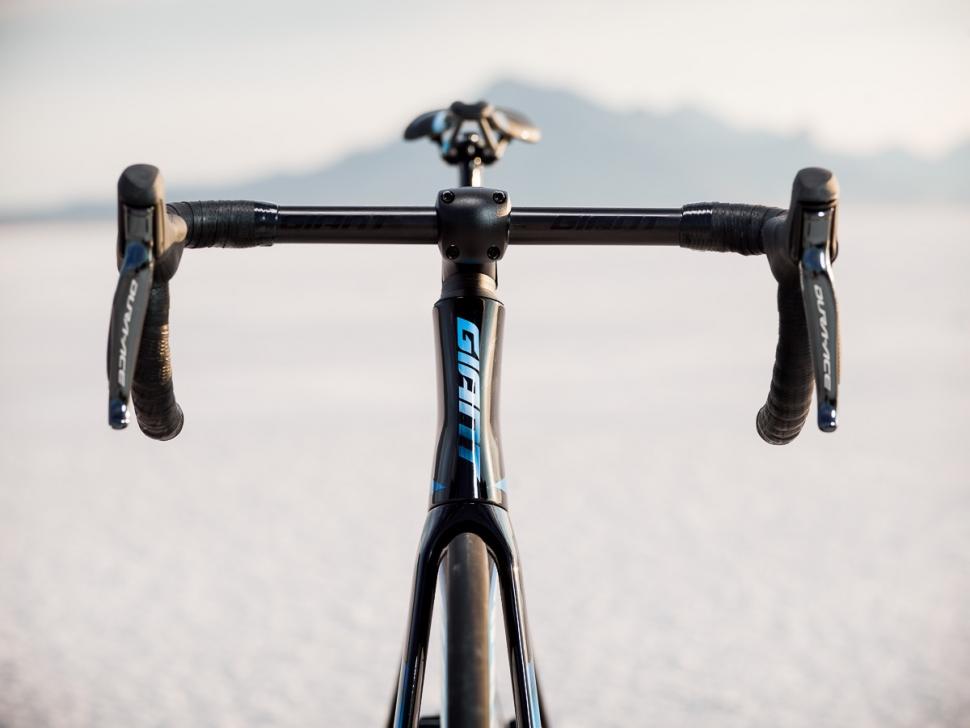
Giant’s new Propel Disc bikes (above) come with the hydraulic hoses and gear cables plumbed internally through the handlebar and stem and from there into the head tube so that none are exposed, and it’s a similar deal with the Simplon Pride.
More electronic shifting. Possibly
We’re currently reviewing the FSA K-Force WE groupset here at road.cc (stay tuned for a review in the coming weeks) so, after delays, another electronic groupset will be available to buy soon, adding to the Shimano Di2, Campagnolo EPS and SRAM Red eTap that are already out there.
Find out about FSA’s new K-Force WE electronic semi-wireless groupset.
Whether or not we’re going to see electronic shifting on cheaper bikes is another matter. Like those existing designs, K-Force WE is high end stuff. Shimano has just updated its second tier Ultegra groupset (below), including the Di2 version, which will be on many 2018 bikes. Shimano 105 is due an upgrade next (Shimano does these things in rotation) but don’t hold your breath on a Di2 version. As far as we know, there’s not one planned.
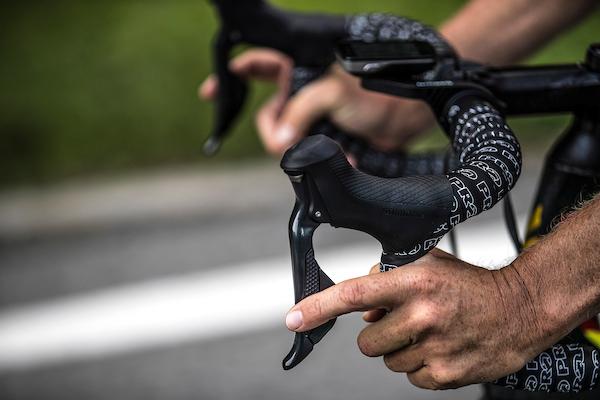
Read our Shimano Ultegra R8070 Di2 Disc groupset first ride.
With all that in mind, you’re looking at roughly £2,500 as the starting point for Di2-equipped bikes from many of the largest brands. Canyon’s Endurace CF 8.0 Di2 is £2,449, for example, and the 2018 Focus Izalco Race Carbon Ultegra Di2 is £2,599, although the least expensive Trek road bike with electronic shifting is the Émonda SL 7 at £4,000.
Wheels and tyres get wider still
We all know that tyres have been getting wider for ages now and that trend is continuing into 2018. 25mm wide tyres are still in the majority on performance-type road bikes but 28mm isn’t unusual. Although rim brake callipers limit tyre width, disc brakes allow manufacturers to offer more clearance.
The 3T Strada road bike, for example, has clearance for tyres up to 30mm. The Wilier Cento10NDR, can take tyres up to 28mm wide with direct mount rim brakes but you go up to 32mm if you go for a disc brake setup.
Of course, all of the new gravel/adventure/all-road bikes out there can take much wider tyres. The Cube Nuroads, for instance, come fitted with 36mm wide tyres but they’ll take up to 40mm, while the Merida Silex allows tyres up to 42mm on 700c wheels or 2.25in if you switch to 650b.
Wheels are still getting wider to work better with these wider tyres. Zipp, for example, announced several new wheelsets recently, all of them disc brake-specific and compatible with tubeless tyres.
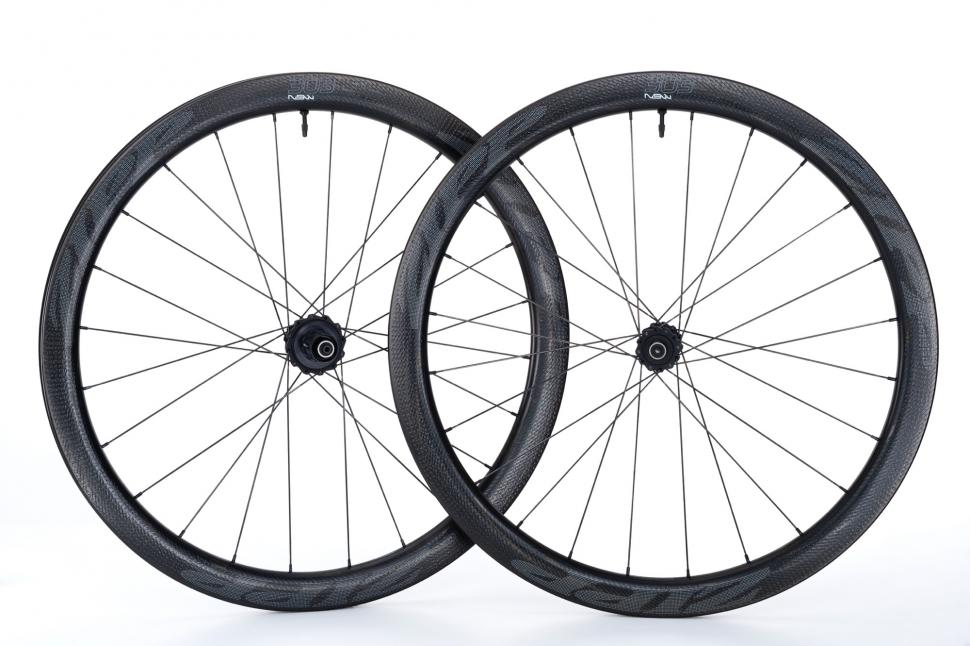
The 202 NSW and 303 NSW (above) have a 21mm internal width because Zipp’s engineers found that to be the most aerodynamically efficient option. Zipp believes these wheels are well suited to rough roads and perform fastest with 28mm tyres at the majority of wind angles.
Read about Zipp’s new disc brake wheels.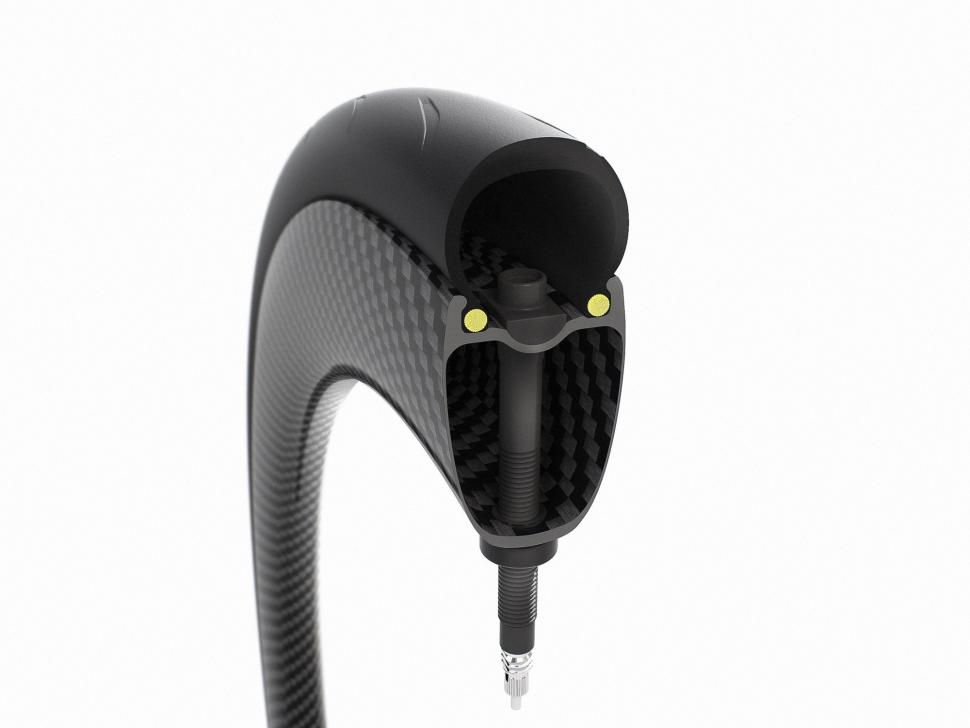
Tubeless wheels/tyres continue to grow in popularity. Mavic, for example, has introduced a Road UST (Universal System Tubeless) system (above) that, it says, is easier to use and safer than existing tubeless systems. The Road UST range initially covers 15 wheels.
Find out about Mavic’s Road UST tubeless system.
Power meters to the people
Power meters are here, there and everywhere these days, Shimano (above and below) being the latest big name to get involved. The first Shimano units have arrived on these shores and we currently have one in for review. It isn’t a cheap option, though.

The third generation Garmin Vector pedals were announced back at Eurobike and will make an impact in 2018 too. The Vector 3 (below) measures each leg independently and costs £849.99 while the Vector 3S one leg and doubles it to give total power. It costs £499.99.
.
Check out Garmin’s Vector 3 power pedals.
Powermeters still require a significant investment but there are ever more options available.
Smart trainers are taking over!
There has been a huge amount of activity in the smart trainer market recently, largely prompted by the opportunities afforded by Zwift, TrainerRoad and other online apps. Cycling indoors has become a whole lot more interesting!

One of the most innovative new products to emerge lately is the Wahoo Kickr Climb which adjusts the front end of your bike to simulate hills.
Read about the Wahoo Kickr Climb.
You don’t necessarily need to go quite that far to get a great indoor riding experience. The Elite Drivo (above) that we reviewed recently is an excellent piece of kit, for example.
Here’s our Elite Direto review.
Find out about the most interesting smart trainers that we spotted at Eurobike 2017.
Mat has been in cycling media since 1996, on titles including BikeRadar, Total Bike, Total Mountain Bike, What Mountain Bike and Mountain Biking UK, and he has been editor of 220 Triathlon and Cycling Plus. Mat has been road.cc technical editor for over a decade, testing bikes, fettling the latest kit, and trying out the most up-to-the-minute clothing. He has won his category in Ironman UK 70.3 and finished on the podium in both marathons he has run. Mat is a Cambridge graduate who did a post-grad in magazine journalism, and he is a winner of the Cycling Media Award for Specialist Online Writer. Now over 50, he's riding road and gravel bikes most days for fun and fitness rather than training for competitions.
Latest Comments
- anotherflat 40 sec ago
Road tubeless? Worst upgrade I ever made, hoping when I get round to trying over Xmas that I can get the new (non-tubeless, so hopefully a slacker...
- Rendel Harris 4 min 56 sec ago
TRP cable-actuated hydraulic calipers, haven't tried them myself but reviews generally rate them as better than cable-only brakes such as Sora. I...
- wtjs 17 min 59 sec ago
And we can be sure that Police Scotland would be similarly disinterested...
- wtjs 22 min 2 sec ago
The self-professed cyclists are really self-claimed cyclists of the 'I'm a cyclist myself' variety
- lesterama 33 min 23 sec ago
I used to have the good fortune of watching Croydon disappear into the distance every workday afternoon, from the comfort of my commuter train. It...
- slc 1 hour 33 min ago
They should read scampercraft and not exaggerate the danger of scuttling along. I discourage squirrel predation by acting like one.
- HalfDanHalfBiscuit 1 hour 43 min ago
You can get the Varia for £10 less from Decathlon.
- Geoff H 2 hours 17 min ago
Perhaps they should apply the same standard to dangerous, unsafe, poorly designed roads and COMPLETELY rip them out rather than "fix" or "redesign"...
- Destroyer666 2 hours 40 min ago
Although the article does not make this clear, the Cybertruck reference is not made by Ingrid, but just some person stating their opinion on the...

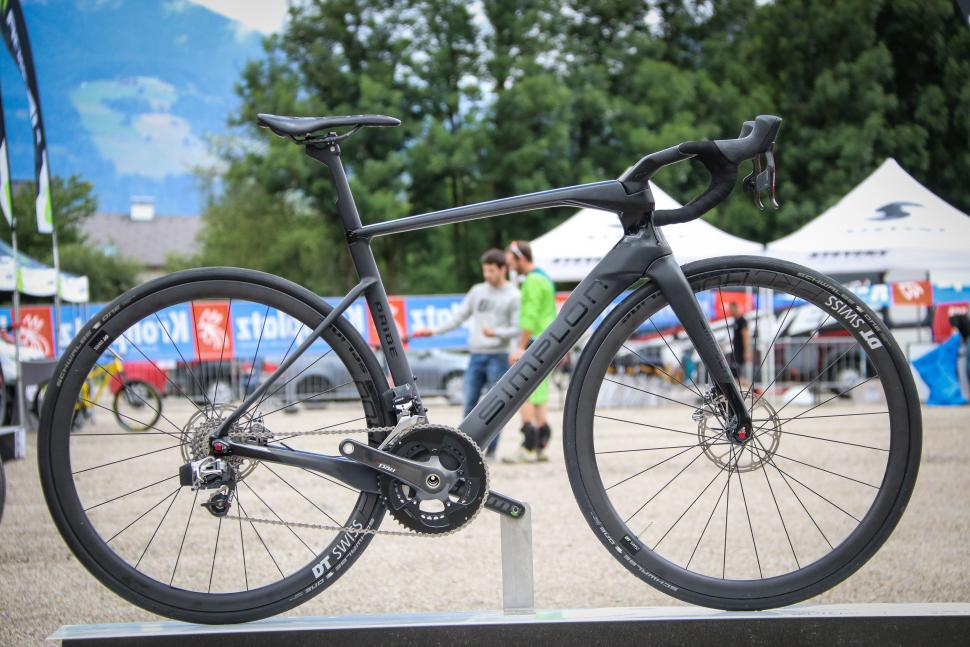


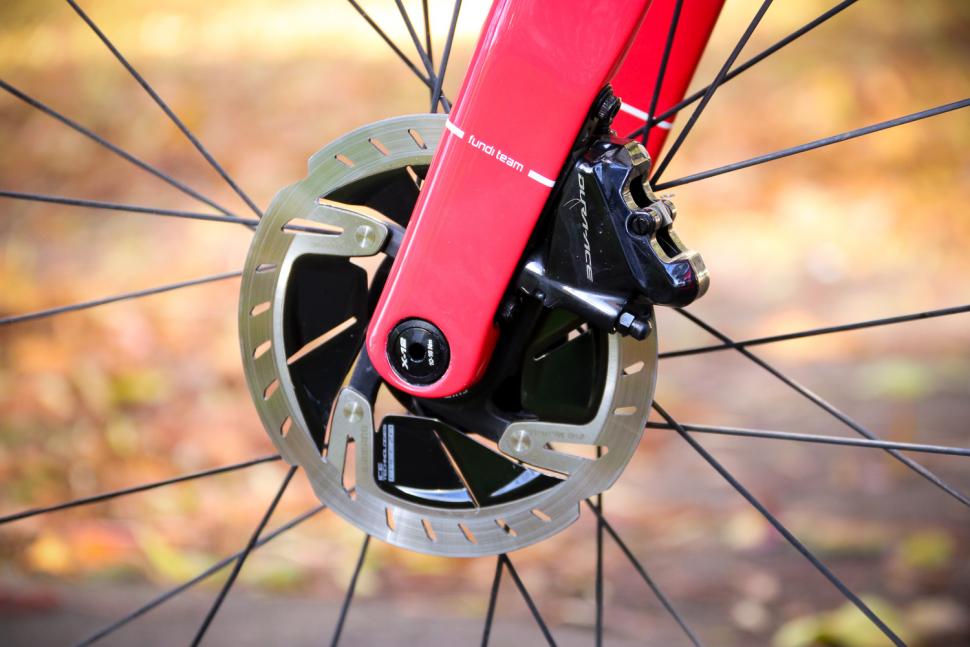


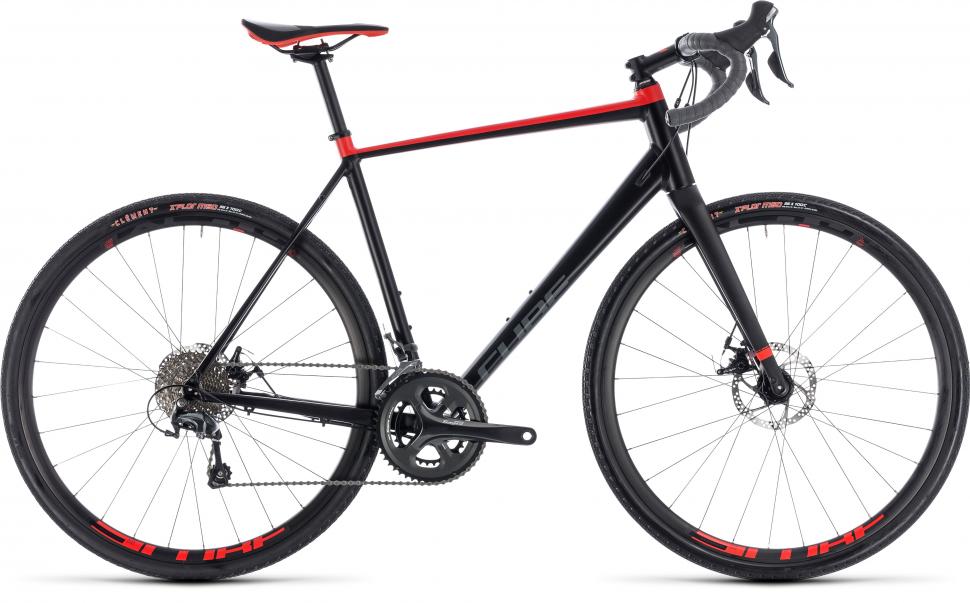
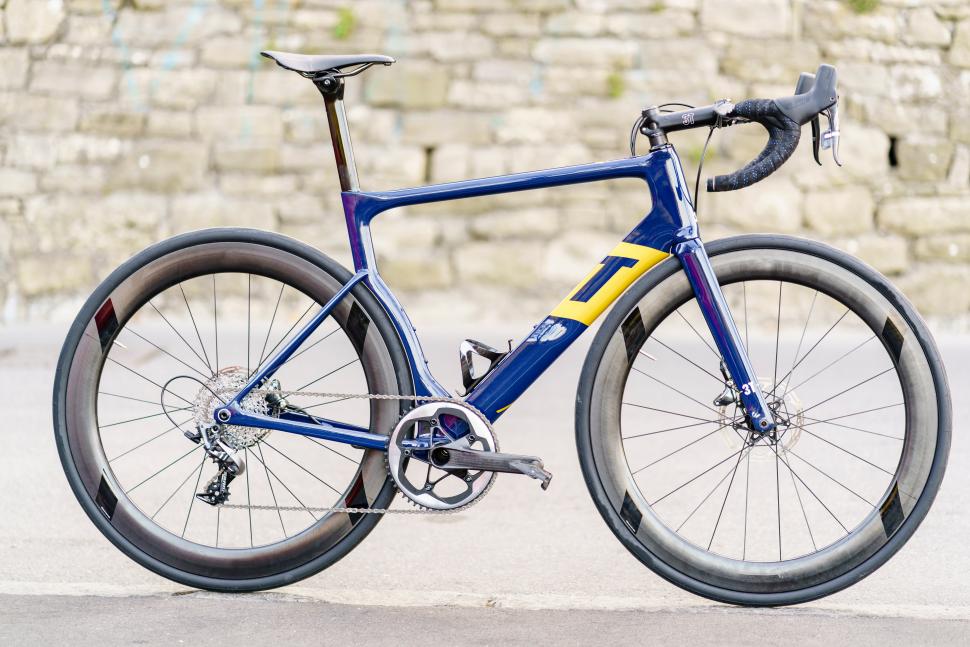
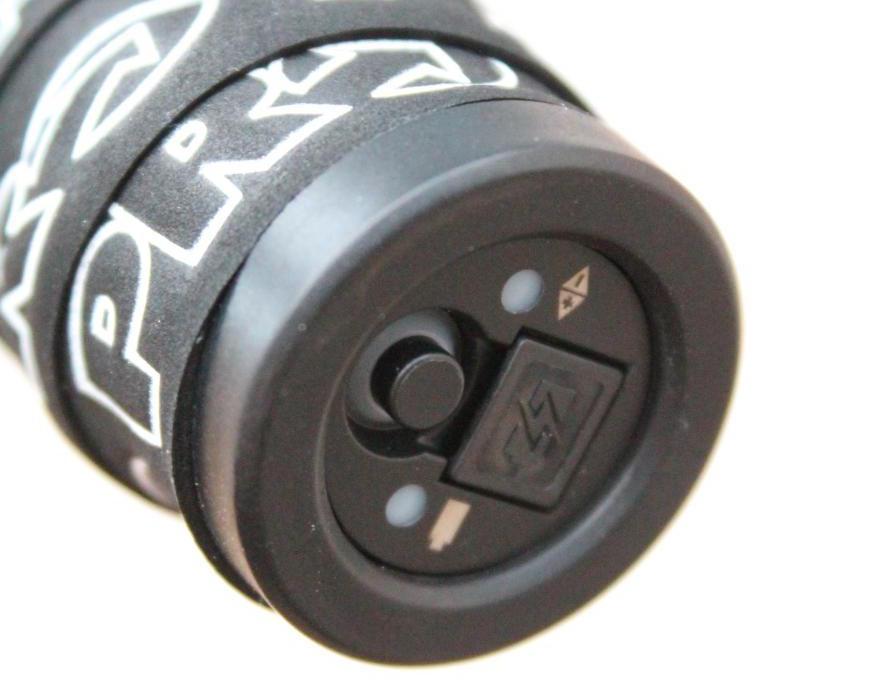

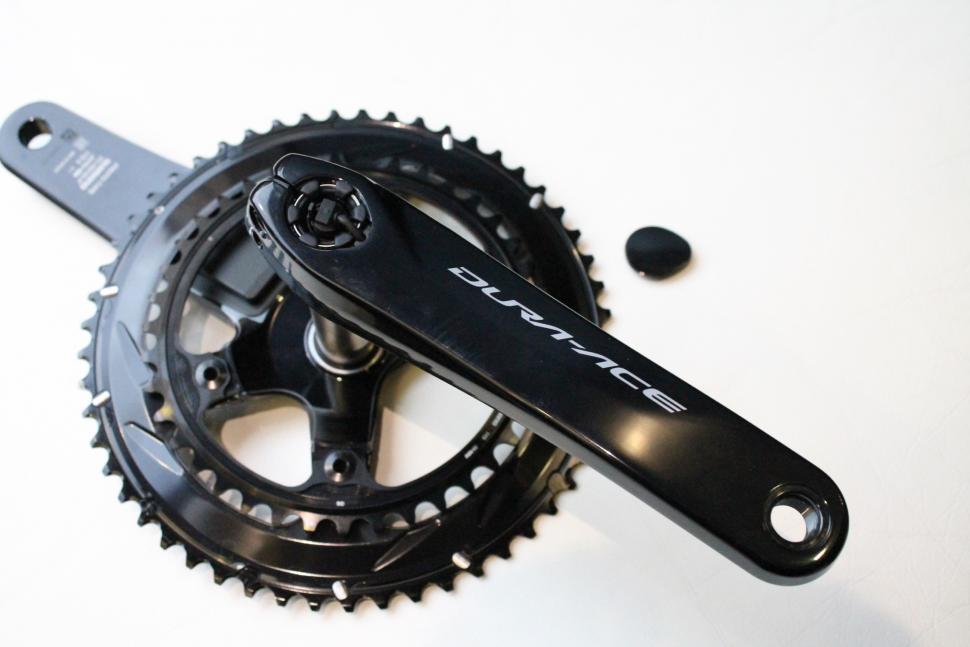
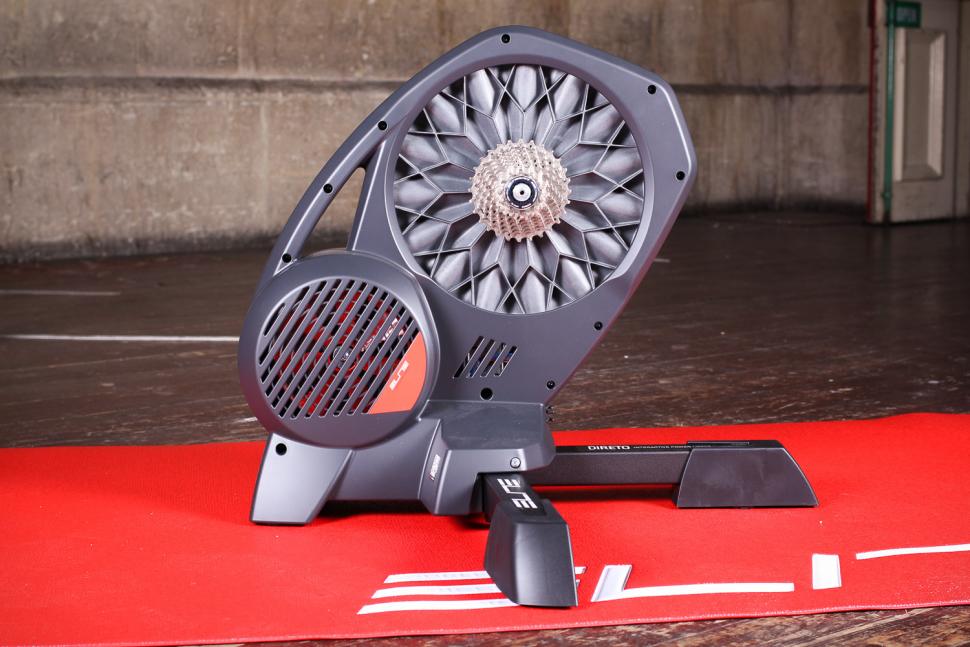
Add new comment
16 comments
Love lots of the new tech and I'm in my mid 50s, have 2 bikes with Di2, love it.
Had a Tacx Imagic and loved the old VR rides, then upgraded that to the Tacx Flow, that was good, but even better was the Flux upgrade and TrainerRoad subscription, wish they'd been about when I was racing in the 90s
Had a disc brakes road bike, and ilI' get another sometime. Got wide rims now, and just tried tubeless, great improvement. I was an early adopter of the original white Look pedals, I had the first wireless Cateye computer.
I don't agree with the luddites who talk about 7 speed, toeclips, etc etc, bikes would be so boring if innovation wasn't happening.
Look at what happened since the UCI introduced the standard diamond frame regulations. No more Pinarello Espadas being built.
I still have a lovely steel frame, it's still a nice bike, but I also love my tech.
New tech never is received well by most cyclists. Disc brakes and to some extent electronic shifting are not a marketing ploy. They are awesome advances for cycling. Disc brakes primarily are safer, more dependable, less of a hassle, and are not affected by the many things like rim brakes. They're not dependent on rim true, rim wear, pad adjustment, weather conditions, etc. Disc wheels wil last much longer. They've already reached a competitive weight as well. My Supersix Evo 56cm Di2 Disc is 15.21lb with pedals. Using them descending the mountains of Southern California is a joy and performance booster. If you are fine with your rim brake ride, cool. Just don't claim there aren't any benefits.
It's coming to the roads near you...
Not so long ago the industry was complaining about the minimum weight of 6.8kg, claiming that it stood in the way of successfully marketing lighter bikes. No it seems, the same weight limit comes in handy for them to promote disc brakes and also claiming that aero is more important than weight. This could be the opportunity for independant small bike builders to take over the market for bikes the discerned riders want. A similar trend we can see in the beer industry, where small craft breweries are popping up everywhere.
Erm, I find disc brakes better in the wet so were a welcome addition to my 'wet bike' - I basically figured an alloy frame, wider tyres and disc brakes for a wet ride would be better suited than carbon frame and rim brakes at a similar price point. They got no more cash and I got a better fit for purpose bike.
Same with a smart trainer - £200 to motivate me to ride when the weather was bad and save the components on the bike is surely a modest investment
> I very much doubt that Kittel, or anyone else, gives a toss what sort of brakes they've got in a
> flat-out sprint for the line
No they're not thinking that but the takeaway from the buying public is that they didn't slow Kittel down. I think disc brakes have been imagined as somehow 'slow' by roadie types. Dispelling that notion is important if the industry wants to sell disc-braked bikes.
Disc brakes - quote "...like it or not, where the pros lead a significant part of the bike buying public follows. High profile wins by riders using disc brake bikes, such as Marcel Kittel on his Specialized Venge ViAS Disc(...), have done great things for the acceptance of the technology."
Good marketing spin, that - convincing the buying public that the latest technology for slowing you down will help you go faster and win races.
I very much doubt that Kittel, or anyone else, gives a toss what sort of brakes they've got in a flat-out sprint for the line - it's hardly the place to be thinking "what lovely modulation I've got in these anchors"!
I can't wait to see some brave marketing soul 'create' a new trend: '... born of a perfect marriage of deep-rooted tradition and superior aesthetics': will someone please resurrect WHITE HANDLEBAR TAPE on bikes! Black is so bloody funereal and dull; surely 'stealth' has had its day by now?
More lovely steel. And more beer whilst we're at it.
If you had disc brakes you could stop turning into your dad quicker...
Fantastic, my wife will be chuffed 2018 is a cheap year for me
Aero serves no purpose unless you are racing. At least when I go out for a 60 mile club ride I get a better work out than the aeronut next to me (although their giant saddle bag and baggy jersey defeats all the aero engineering invested by giant & co).
Discs - just can't see the need on the road
Electronics - keeping it mechanical, charge free bike zone and cheaper for when you break bits
Gravel bikes - A cross, mountain and road bike will do just fine in the UK, all our roads are virtually gravel tracks anyway.
Wider rims, yep, can't argue that, but I've been on 28 tyres for years
Smart trainer - sticking to rollers and riding in the real world
Power meters - I don't race, I care not
Hmmmm I am turning into my Dad.
That's not music that's just noise! And put some bloody clothes on you can't go out dressed in shorts and a t-shirt in this weather, you'll catch your death out there!
Right, companies need to push new stuff to keep selling us 'stuff'. Disc brakes for the road a very good example. Everything gets more expensive. And more complicated. With no true added benefits. Discs, electronic shifting, smart trainers, power meters=great for the racing segment which by far is the smallest group of cyclists.
Where’s the aero mudguards?
I'm still waiting for the aero wicker basket to go on my handlebars
To sum up:
Aero,
Discs,
Aero-discs,
Wide aero wheels,
Wider tyres.
Same as last year it seems.